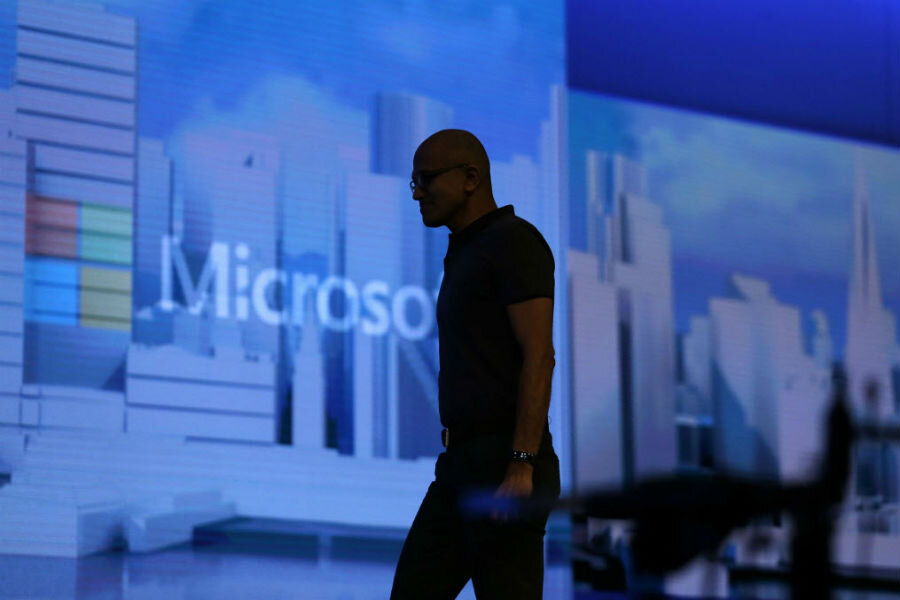In its drive for diversity, is the tech industry neglecting Asians?
Loading...
While the technology industry is heavily criticized for lack of diversity, Asians are rarely part of the discussion, owing to the prevailing stereotype of Asians as engineers and coders well-loved by Silicon Valley.
But a lawsuit filed Monday by the US Department of Labor may change the narrative. Palantir Technologies, a data company co-founded by tech financier Peter Thiel and partially financed by the investment arm of the Central Intelligence Agency, was accused of routinely discriminating against Asian job candidates in its hiring process.
The lawsuit is the first of its kind against a Silicon Valley company, Rose Darling, a senior trial attorney for the Labor Department tells the Associated Press. The suit is unusual because company reports and industry studies show that Asians are overrepresented in the tech industry. Efforts to diversify hiring practices more often focus on adding women, African Americans, and Hispanics into the workforce instead of Asians.
Palantir denied the allegations Monday and said it will contest the suit. It said that the government's case "relies on a narrow and flawed statistical analysis relating to three job descriptions from 2010 to 2011."
Still, the lawsuit brings some scrutiny to bear on Asian representation in Silicon Valley, bringing to the surface an issue that the Asian American community has rallied around in the past: Representation doesn't mean diversity has been achieved. While Asians are well-represented in the tech industry, the representation doesn’t extend to the executive level, a phenomena that applies to other minority groups as well.
A study released May 2015 by Ascend, a pan-Asian organization of business professionals in North America, found that while Asians represent 27.2 percent of the professional workforce for tech giants Google, Hewlett-Packard, Intel, LinkedIn and Yahoo, only 13.9 percent of them are executives.
“The common assumption is that Asians are successful since so many of them already work in Silicon Valley companies,” Janet Wong, a former partner at KPMG and study co-author said in a press release. "However, our deeper EPI analysis reveals that while Asians are well-represented – even overrepresented – at the staff and professional levels, they are underrepresented in the management pipeline and barely seen at the executive levels."
The executive positions are dominated by white men followed by white women, Hispanic men and Asian men, with black women and Hispanic women at the tail end. There are as many Asian professionals as white professionals in these companies, but the report finds that white women and men are 154 percent more likely to be an executive. Asian women are especially underrepresented at the management level.
Some of the reasons the researchers gave for the small number of Asian employees transitioning to management positions include a lack of role models and gaps in leadership expectations and training.
“I consider myself third-generation Chinese American, and I grew up with my parents and grandparents, and their culture was what I grew up with,” Ms. Wong told the Los Angeles Times in an interview. “They told me all I needed to do was stay in school, make good grades, and that was all I needed to be successful. They never taught me the soft skills or leadership skills. So when I started my career, I thought all I had to do was keep my head down, do good work, and I’d be acknowledged and have a successful career.”
Other studies have also found wage gaps between minorities and whites in the high-tech industry, although the gap between Asians and whites is smaller than for other minorities, as USA Today reported in 2014.
Some Asian employees in the tech industry have spoken out on social media about that the lack of dissent in the Asian community, and theorized that it could be part of the reason why the problem persists.
“We are the “model minority” – quiet, hardworking, well-educated, successful in a middle class sort of way.… It’s good enough that we don’t complain about the erasure of our individual identities and work ethic and personal successes, we don’t complain about the bamboo ceiling, we stay quiet on issues of race,” wrote Tracy Chou, software engineer at Pinterest in a LinkedIn post. “To my fellow Asians in tech: It’s time for us to start caring, to start talking, to start doing something about the racial disparities in our industry.”
Some Asian Americans in the tech industry may feel awkward discussing this when it may seem as if they already have a foot in the door. Some may point to Indian executives at companies such as Microsoft, Google, and Nokia as examples of Asians representation in the tech industry, the Wall Street Journal reports.
Anil Dash, an Indian American and a two-decade veteran in the tech industry, argues in a Medium post that those are rare. In fact, Mr. Dash tells The Christian Science Monitor in a phone interview, the situation is getting worse compared to when he entered the field.
“There has been a lot of pushback … (and sentiment of) I got in, why am i going to complain?” Dash says. “Especially for first generation immigrants who are excited about the opportunity, but also don’t know the tradeoff they’re making.”
Dash points out the tendency for these companies to hire foreigners in the tech industry as one of the reasons. These employees with no permanent immigration status – many are Asians – face problems securing their status and don’t hold much leverage in asking for career advancement.
The Ascend report recommends examining the hiring processes to ensure biases are absent and to develop culture-specific leadership programs. Many tech companies now have initiatives to increase the numbers of Asians and other minorities in leadership positions, The Los Angeles Times reports.
Dash, like Chou, says he believes that Asians in the tech industry, especially Asian men, should begin speaking up for themselves and for other minority groups. Non-Asian minority groups still face hurdles in accessing capital, technology, and perceptional biases in even getting their foot in the door compared to Asians.
“We should acknowledge that we haven’t said enough about anti-Black and anti-Latino attitudes, and that we have not articulated our complicity in industry sexism and misogyny. Indeed, we have often helped build these systems of exclusion, not merely remained silent while they were enforced,” he wrote in the Medium post two years ago. “We can do justice to our peers and coworkers who are working in an unfair system, bringing them closer to the level playing field they deserve.”








